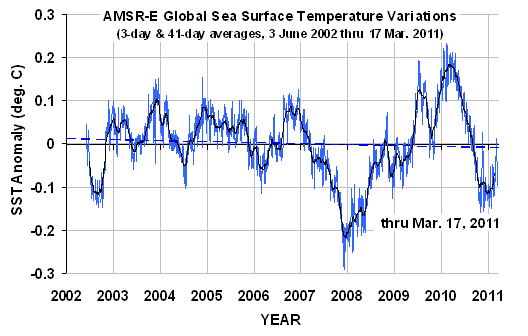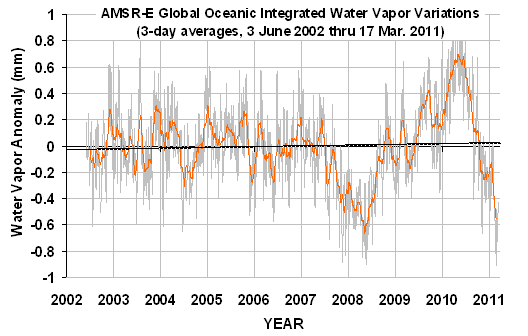It has been awhile since I provided an update to the global average sea surface temperature plot, shown below through yesterday (March 17, 2011).

As can be seen, SSTs remain below normal. The trend line is close to zero, so still no sign of “global warming” having resumed.
The corresponding water vapor plot (vertically integrated) shows a rather spectacular plunge in recent weeks:


 Home/Blog
Home/Blog



